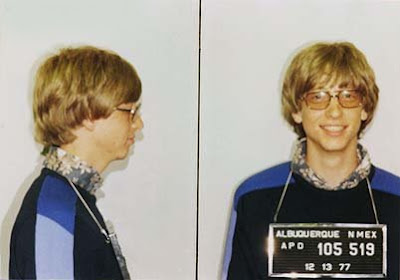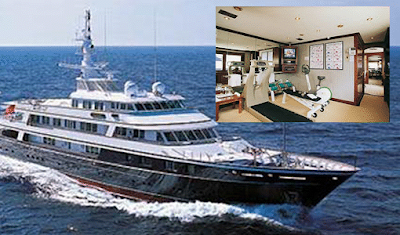Saturday, February 6, 2010
The European Central Bank
The European Central Bank (ECB) was created in 1999 and overnight became the central bank for the Euro area. The Euro area is currently defined as the 12 countries that have adopted the Euro as their currency. In order to become a member, every country was required (and future members will be required) to meet certain criteria, such as having stable inflation rates and meeting specific GDP levels. The bank’s headquarters, the ECB Eurotower, are currently located in Frankfurt, Germany. It is important to note that not every member of the European Union (EU) has adopted the Euro as their currency and therefore, are not decision-makers in the ECB. They are members of the European System of Central Banks (ESCB) and serve on the General Council in the ECB.
The ECB is very similar to the United States Federal Reserve. One such similarity is the tenet of the separation of politics from the forming of monetary policy. This is especially crucial for the ECB which represents multiple countries, as it does not allow one government to manipulate the bank for its own selfish purposes. Another similarity to the Federal Reserve is that it is not fully autonomous. Just as the Federal Reserve is reviewed by Congress, so to the ECB is accountable to the European Parliament and the council of ministers. In addition to reviewing the ECB, Parliament appoints the President (to a term of eight years), Vice President and the other four members of the bank’s executive board who then must be approved by the council of ministers. Also, the President of the ECB must present an annual report to Parliament.
The ECB is run by a governing council, which consists of a six-member executive board and the governors of the national central banks of countries within the Euro area. Each member of the governing council has equal voting rights. The governing council controls the monetary policy and sets the interest rate in order to meet their objectives. In addition, there is a General Council whose members include the President and Vice President of the ECB, and the governors of all national central banks in the European Union. The General Council mainly acts as an advisor to the governing council and does not implement any policy.
The ECB has two objectives, but the primary one above all is to use monetary policy in order to maintain price stability. They have a set target for an acceptable inflation rate which is below 2% per year. This is one way the ECB differs from the United States Federal Reserve, which is more flexible in establishing an acceptable inflation rate. Another difference between the two banks is that the ECB places a greater emphasis on transparency, or letting investors know its intentions. The fact that the inflation target is the only main goal of the ECB is a major source of criticism. Many believe that this primary goal is too narrow and should include other objectives of equal importance such as achieving full employment.
The lesser objective of the ECB, yielding to inflation, is to support the general economic policies in the Euro area. In other words, the bank tries to contribute to the achievement of the stated objectives of the overall European community, such as meeting a high level of employment and maintaining sustainable and non-inflationary growth. Other tasks of the ECB include: conducting foreign exchange operations, operating payment systems, issuing bank notes and supervising credit institutions.
How the ECB Affects the Foreign Exchange Market
The ECB’s interest rate decisions have a profound effect on the euro’s exchange rate. For example, if the ECB decided to raise the interest rate, then returns on Euro assets will appear more favorable to investors and the Euro will appreciate in value. This will create a situation where imports are cheaper for Euro area citizens and their exports become more expensive to the rest of the world. On the other hand, if the ECB chose to lower the interest rate, then Euro assets will not be as appealing to investors and the Euro will depreciate in value. This scenario causes imports to be more expensive for Euro area citizens, but their exports become more appealing to other nations.
Distinct Challenges of the ECB
Every central bank deals with many difficulties, as balancing an entire economy can be rather tricky. Nevertheless, the ECB faces several unique problems which other banks do not have. The first issue is effective communication. Bank leaders occupy a position where every word and phrase they use is scrutinized for some hint at future policy decisions. However, every release and speech given by members of the ECB and especially current president Jean-Claude Trichet is translated into at least nine languages. Every language contains nuances and meanings that can get lost or even misinterpreted across translations, which could potentially be disastrous. This is one reason that the ECB stresses transparency because it is important to make their intentions very clear in spite of language barriers.
Another difficulty exclusive to the ECB is that its decisions are not tailored to a single economy, but they affect 12 different economies. Therefore, making decisions can become extremely tricky as they try to improve the Euro area economy as a whole, even at the expense of a single country. For example, recently the GDP growth rate of Ireland was an overheated 4.5% while Italy was a lagging 1.2%. Ireland could potentially use a tightening cycle with increased interest rates, while Italy potentially needed a cut in the rate in order to stimulate growth. Another recent example demonstrating this issue occurred when the ECB hiked their interest rates in order to curb inflation. Several larger economies in the Euro area (Germany, for example) that were recently coming out of an economic slump were unhappy as the higher rates would stunt their growth. These problems make decision making very difficult at the ECB and, therefore, the need for strong leadership is critical, which led to the appointment of Jean-Claude Trichet as President.
Current President: Jean-Claude Trichet
Jean-Claude Trichet was born in Lyon, France in 1942. He began his career with a degree in mining engineering from the Ecole nationale supérieure des Mines de Nancy. After working in mines for several years, he left the field and received a degree in economics. Following countless years of civil service in France, he became the President of the European Central Bank in 2003. Trichet served as Governor of the Bank of France for 10 years and was well liked by France’s President Jacques Chirac, who pressed for Trichet to be the first president of the ECB in 1999. Although he was passed over in favor of the first President of the ECB Wim Duisenberg, he was guaranteed to become the next President once Mr. Duisenberg stepped down. However, after being implicated in an accounting scandal at the state-run Credit Lyonnais, his future as a financial leader became murkier. Following a long trial in which he was acquitted of all charges, he received tremendous support in his bid to become the leader of the world’s second largest economy.
One factor that influenced the decision to appoint Trichet was his political background. Unlike the Federal Reserve, where the Chairman has the final say, the President of the ECB has only one vote out of a total of 18. Therefore, the belief was that an effective President would need strong negotiating and brokering skills - both of which Trichet demonstrated during his years as a civil servant. Early in his career these talents were sorely challenged. Several of Europe’s major countries, France and Germany, had deficits that were well above the levels allowed by the Euro area. This problem persisted for several years and threatened the overall economy and the integrity of the ECB. In order to overcome this problem, Trichet had to use his skills as a negotiator to get them to cut their government spending and bring newfound respect to the institution.
Despite proving his mettle in the verbal arena, some of the harshest critics of Trichet accuse him of being a poor communicator. Once, after supposedly signaling rates would increase, he kept them stable which affected the markets negatively. Also, he is charged with being verbose, using too many words without giving a clear answer and not being transparent. Overall, in a short period of time Trichet has successfully guided the Euro area out of recession and the Euro has recently been trading at all-time highs against the dollar, reflecting its strength. He has continued the legacy of Mr. Duisenberg and has met the strict demands and targets set by the ECB, despite the recent recession and surging oil prices. As the head of the world’s second largest economy, he is an important and powerful figure to keep tabs on due to his effect on the Euro economy and the Euro itself.
realated articles:
Tokyo Stock Exchange
Day Trading: Profitable But Risky
The Bank Of Japan
The European Central Bank
The Bank Of England
Gifts From England
Philippines Light Rail Transit Public Transportation
The Manila Light Rail Transit System (Filipino: Sistema ng Magaan na Riles Panlulan ng Maynila),[citation needed] popularly known as the LRT, is a metropolitan rail system serving the Metro Manila area in the Philippines. Its twenty-nine stations over 28.8 kilometers (17.9 mi) of mostly elevated track form two lines. LRT Line 1, also called the Yellow Line, opened in 1984 and travels a north–south route. LRT Line 2, the Purple Line, was completed in 2004 and runs east–west.
The LRT is operated by the Light Rail Transit Authority (LRTA), a government-owned and controlled corporation under the authority of the Department of Transportation and Communications (DOTC). Along with the Manila Metro Rail Transit System (MRT, also called the Blue Line), and the Philippine National Railways (PNR), the LRT is part of Metro Manila's rail transportation infrastructure known as the Strong Republic Transit System (SRTS)
Stations
 The People Power Revolution was a series of nonviolent and prayerful mass street demonstrations in the Philippines that occurred in 1986. It was the inspiration for subsequent non-violent demonstrations around the world including those that ended the communist dictatorships of Eastern Europe.
The People Power Revolution was a series of nonviolent and prayerful mass street demonstrations in the Philippines that occurred in 1986. It was the inspiration for subsequent non-violent demonstrations around the world including those that ended the communist dictatorships of Eastern Europe.

 In 1990, it was voted by the BMW Tropical Beach Handbook as one of the best beaches in the world
In 1990, it was voted by the BMW Tropical Beach Handbook as one of the best beaches in the world
 Barasoain Church (also known as Our Lady of Mt. Carmel Parish) is a Roman Catholic church built in 1630 in Malolos City, Bulacan.
Barasoain Church (also known as Our Lady of Mt. Carmel Parish) is a Roman Catholic church built in 1630 in Malolos City, Bulacan.
 Laguna de Bay (Filipino: Lawa ng Bay; English: Laguna de Bay is the largest lake in the Philippines and the third largest freshwater lake in Southeast Asia
Laguna de Bay (Filipino: Lawa ng Bay; English: Laguna de Bay is the largest lake in the Philippines and the third largest freshwater lake in Southeast Asia
 Malacañan Palace, is the official residence of the President of the Philippines.
Malacañan Palace, is the official residence of the President of the Philippines.






















 >
>




















































No comments:
Post a Comment